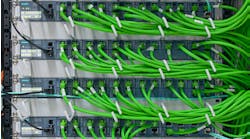Integrating your business, manufacturing systems doesn't have to be hard
If you are struggling to manage production to meet customer needs, your facility may benefit from a Manufacturing Execution System, or MES. Several software and hardware products are available to help bridge the business world of SAP, Oracle, and SQL to the shop floor dominated by PLC and DCS hardware. Whether you need improved inventory control, recipe management, or better production visibility for management, an MES can simplify how you run your business.
The reality is that many industrial companies operate like two separate entities when handling business and production. The “business” side of the company is responsible for managing client orders and inventories, predicting future sales and business needs, and determining what needs to be made and when.
See also: Navigating plant downtime risks: Choosing the right computing infrastructure
The “production” side is responsible for manufacturing a product on time and cost efficiently, with a focus on personnel safety, proper equipment maintenance, and raw material and energy use. Both groups employ talented people with different educational backgrounds and skill sets. Despite differences in technology stacks—and even geography in many cases—they need to work together.
Where business and production can work together
Obvious benefits of improving both “business” and “production” include better inventory management, faster response to client demands, better production planning, reduced product turnarounds, and more readily available production metrics. Some more subtle benefits include reduction of clerical tasks for personnel and improved cooperation and coordination between production and business functions.
See also: Webinar replay: New SEC Reporting Requirements and Your Cyber Defenses
Many companies are looking to adopt Industry 4.0 technologies to increase manufacturing efficiency. In their search for game-changing solutions, some companies have been distracted by AI, Big Data, and other high-concept (and often steep investment) technologies. Some of these solutions can have huge payoffs, if applied to the right problem and supported by the right framework of technology, in-house personnel, and outside expertise.
However, many companies are overlooking easier plays using well-proven solutions that could either be classified as Industry 4.0 or 3.5. These solutions often are easier to implement, easier to cost justify, and easier to support in the long term. This is the space occupied by products like MES, IIoT, and other cross-platform products.
An initial goal of any organization looking to bridge the business and production divide should be creating a data bridge between both systems. Businesses run on platforms like SAP, Oracle, SQL and Power BI.
See also: Video and podcast: Closing Gaps in Risk Management: Technologies to Ditch Your Old Processes
These platforms are well understood by IT professionals but often considered complicated systems by process automation and production staff. Production platforms run in proprietary PLC and DCS environments.
These are foreign black boxes to most IT professionals—systems full of devices that don’t run MS Windows, use Intel chips, or even have a traditional Ethernet port. Additionally, these devices are directly connected to process equipment capable of causing injury or physical damage if not running properly.
Control system equipment is often acquired from multiple vendors with different architectures, communication protocols, and hardware with a 30-year lifecycle.
Hardware solutions, software solutions, and cloud solutions are three methods for bridging these digital divides.
Hardware usually consists of vendor-specific modules
Hardware solutions are typically vendor-specific modules that are designed to transfer data out of and into a proprietary PLC or DCS environment.
They may be made by the PLC/DCS vendor or by a third party and are designed to plug into existing card racks or standalone units. These solutions are targeted at the control system owner and leverage the skill set of the process control/automation engineer.
They function as a system translator with access to PLC/DCS tags and registers and transfer data via an ODBC connection (or similar) into a business system database.
See also: Industrial OT widely vulnerable to intrusion, survey finds
Support from business IT staff is required to assist in data table mapping in the business systems and creating secure tunnels through network firewalls that separate a production OT network from a business IT network.
Benefits include dedicated hardware that minimizes impact to existing hardware resource loading, leveraging familiar engineering software platforms, and easier troubleshooting.
However, if your facility operates with a mixed control system environment, it’s likely that a platform-to-platform data transfer will be needed to connect to the business network.
Vendor-supplied software solutions work best natively
Vendor-supplied software solutions may or may not work with other vendor control systems, but they frequently integrate most easily and/or offer additional features when connecting to their native platform.
Third-party solutions typically connect to a wide variety of platforms, especially if they support the popular OPC or MQTT industrial protocols. However, while still targeted to the control system owner, they may not be able to leverage the automation engineer’s knowledge as easily as hardware solutions. Business IT support needs should be like hardware solutions.
Cloud: The meet-in-the-middle solution
Cloud solutions are more of a “meet-in-the-middle” solution—the most recent and advanced solutions to build a data bridge. Data lake solutions pull data from multiple systems in a cloud-hosted pool of data to be used by any number of applications.
See also: AI and automation power self-managed warehouses
Tailored cloud solutions. are usually built to do specific data transfer functions through a cloud service. Data lake solutions provide the most options for future applications but also require the most expertise to set up and maintain. Tailored solutions only require slightly more expertise than on-premises software solutions but generally have higher continuing software fees than on-premises hardware and software solutions.
All the above options are tested and proven. Choosing the right one for your business depends on many factors and can be a challenge. Do you have a homogenous control system architecture? Are you able to transfer or store data in the cloud? What is your existing team’s skillset and support capability? What data is most important to your organization, and what will you do with it?
Engage an experienced digitalization partner to help guide your decisions and smooth the implementation journey.




